Pinterest is a visual search engine that 553 million people use every month to look for ideas and products. Yet, although most regard it like Instagram’s shy cousin, smart marketers are secretly cashing in. This is what most “Pinterest experts” won’t tell you → 85% of people who use Pinterest every week have bought something directly from a pin they found on the site. In this post, we’ll show you how to use Pinterest for business by revealing the secrets of high-converting methods, pin optimization, and how to transform views into genuine sales.
What Makes Pinterest Marketing Work When Other Methods Don’t
Most social media sites are made for fun. Pinterest is made to get people to do things. People don’t just kill time when they open Pinterest; they’re planning their next buy, their dream vacation, or a home improvement project.
What makes Pinterest different is what users want →
- Facebook users scroll to connect with friends
- Instagram users browse for amusement
- People use Pinterest to find answers to their questions and buy things.
This basic distinction is why Pinterest marketing strategy provides a 32% greater return on ad spend (ROAS) compared to other digital platforms, according to Nielsen data. Here’s the secret sauce most marketers miss → Pinterest users spend 2x more money when purchasing compared to users on other social sites.
They’re not simply window shopping—they’re ready to buy.
Think about it. When you open Pinterest and search for “modern kitchen ideas,” you’re not just perusing. You’re planning. You’re researching. You’re preparing to spend money. That’s the treasure clever marketers are tapping into.
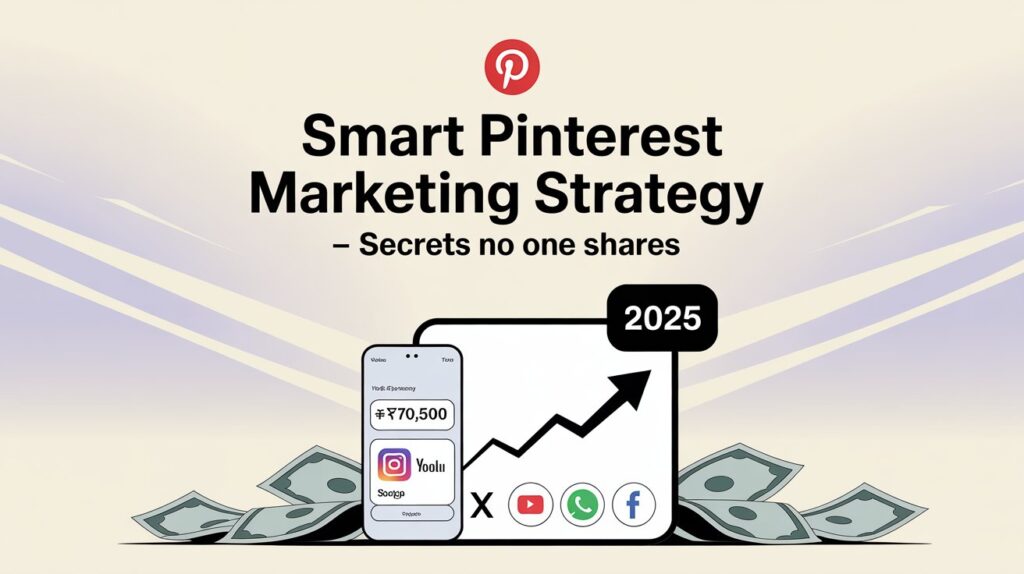
The Pinterest User Mindset → Planning vs. Scrolling
Pinterest users work in what marketers term the “discovery phase” of the buying experience. Unlike other platforms where consumers could stumble onto your material, Pinterest users are actively seeking solutions.
Key Pinterest User Behaviors
- 80% of weekly users actively seek ideas for future purchases
- 96% of queries are unbranded (people search for “leather handbags,” not “Coach bags”)
- 1 in 3 Pinterest shoppers had family incomes over $100,000
- Users store over 1.5 billion pins monthly to their boards for future reference
This presents a unique opportunity for firms. Your content isn’t competing with cat videos or political rants—it’s competing with other answers to actual issues.
How to Use Pinterest for Business → The Foundation Strategy
Before getting into sophisticated strategies, you need the correct foundation. Most businesses fail on Pinterest because they ignore the fundamentals and move right to posting pretty photographs.
Step 1 → Convert to a Pinterest Business Account
Your personal Pinterest account won’t cut it for professional Pinterest marketing. A business account unlocks →
- Pinterest Analytics dashboard
- Rich Pins functionality
- Pinterest Ads capabilities
- Shopping features
- Verification badges
The converting process is free and takes less than 5 minutes. There’s practically no need to continue with a personal account if you’re serious about Pinterest marketing strategy.
Step 2 → Optimize Your Profile for Discovery
Your Pinterest profile is your internet marketplace. Most businesses treat it like an afterthought, then wonder why their Pinterest marketing approach isn’t working.
Profile optimization checklist →
- Use a clear, searchable business name
- Write a keyword-rich bio (160 characters max)
- Add your website URL
- Choose a professional profile photo or logo
- Claim your website for verification
- Enable Rich Pins
Here’s what a killer Pinterest bio looks like → “Helping busy professionals create organized, beautiful homes | Interior design tips, storage solutions & home decor inspiration | Shop our favorites ⬇️”
Notice how it clearly specifies who they aid, what problems they solve, and includes relevant phrases like “interior design,” “storage solutions,” and “home decor.”
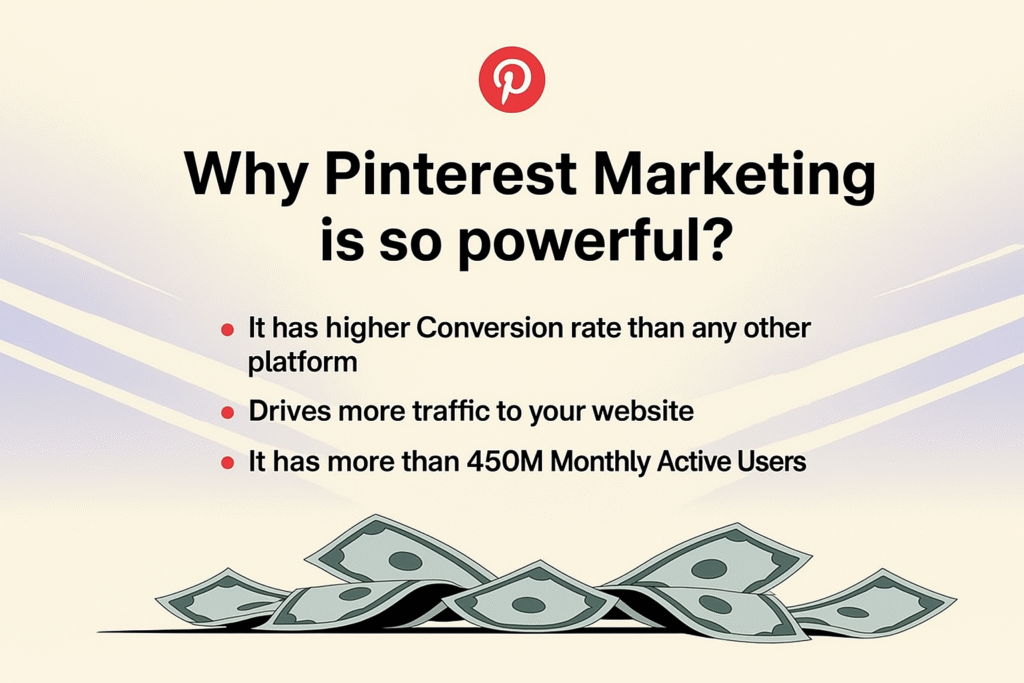
Pinterest Marketing Strategy → The Content Framework That Converts
Most Pinterest material fails because it focuses on being lovely instead of being useful. Pretty gets saved. Useful gets clicked. Clicked content produces money.
The 4-Layer Content Strategy
Layer 1 → Problem-Solving Content (40% of your pins)
This material immediately targets your audience’s problem points and delivers clear solutions.
Examples →
- “5 Storage Solutions for Small Apartments Under $50”
- “How to Meal Prep When You Hate Cooking”
- “Budget-Friendly Ways to Update Your Living Room”
Key characteristics →
- Specific, actionable recommendations
- Clear value proposition in the title
- Step-by-step solutions
- Addresses genuine challenges your audience confronts
Layer 2 → Inspirational Content (30% of your pins)
Pinterest users enjoy aspirational content that helps them visualize their aspirations.
Examples →
- “Dreamy Bedroom Ideas That Actually Work in Real Life”
- “Small Business Office Setups That Inspire Productivity”
- “Cozy Reading Nooks You Can Create This Weekend”
Key characteristics →
- Visually fascinating visuals
- Achievable aims (not impossible dreams)
- Includes practical elements
- Appeals to emotions while preserving realism
Layer 3 → Educational Content (20% of your pins)
Position yourself as an expert by teaching your audience new skills or giving intimate knowledge.
Examples →
- “Interior Design Rules Professional Designers Actually Follow”
- “Photography Tips That Make Your Instagram Look Professional”
- “The Science Behind Why Certain Colors Make Rooms Look Bigger”
Key characteristics →Authority-building informationData-backed insightsProfessional suggestions and tricksPositions you as the expert
Layer 4 → Product-Focused Content (10% of your pins)
Direct product marketing should be the smallest amount of your material, but it’s where the money is made.
Examples →
- “Our Top 10 Kitchen Gadgets for Busy Families”
- “The Planning Tools That Changed How I Organize My Life”
- “Beauty Products That Actually Deliver on Their Promises”
Key characteristics →
- Honest product recommendations
- Personal experience stories
- Clear value proposition
- Solves specific difficulties
The magic happens when you blend many layers. A pin titled “How I Organized My Small Closet with 3 $15 Products” combines problem-solving (organization), inspiration (beautiful closet), education (how-to method), and product emphasis (particular recommendations).
The Board Strategy That Actually Drives Traffic
Your Pinterest boards aren’t just collections—they’re your content categories that help the Pinterest algorithm identify your expertise and match your material with searchers.
Strategic board creation principles →
- Keyword-focused board names → Instead of “My Style,” try “Modern Minimalist Home Decor.” Instead of “Yummy Food,” use “Quick Healthy Dinner Recipes.”
- Board descriptions matter → Write 2-3 sentences summarizing what users will find on each board. Include important keywords naturally.
- Mix of content types → Each board should have 60-70% your own content and 30-40% high-quality information from others in your field.
Major brands like Whole Foods Market nail this strategy. Their boards include “Quick & Easy Meals,” “Plant-Based Recipes,” and “Seasonal Produce Guide”—each clearly targeting specific search terms their clients use.
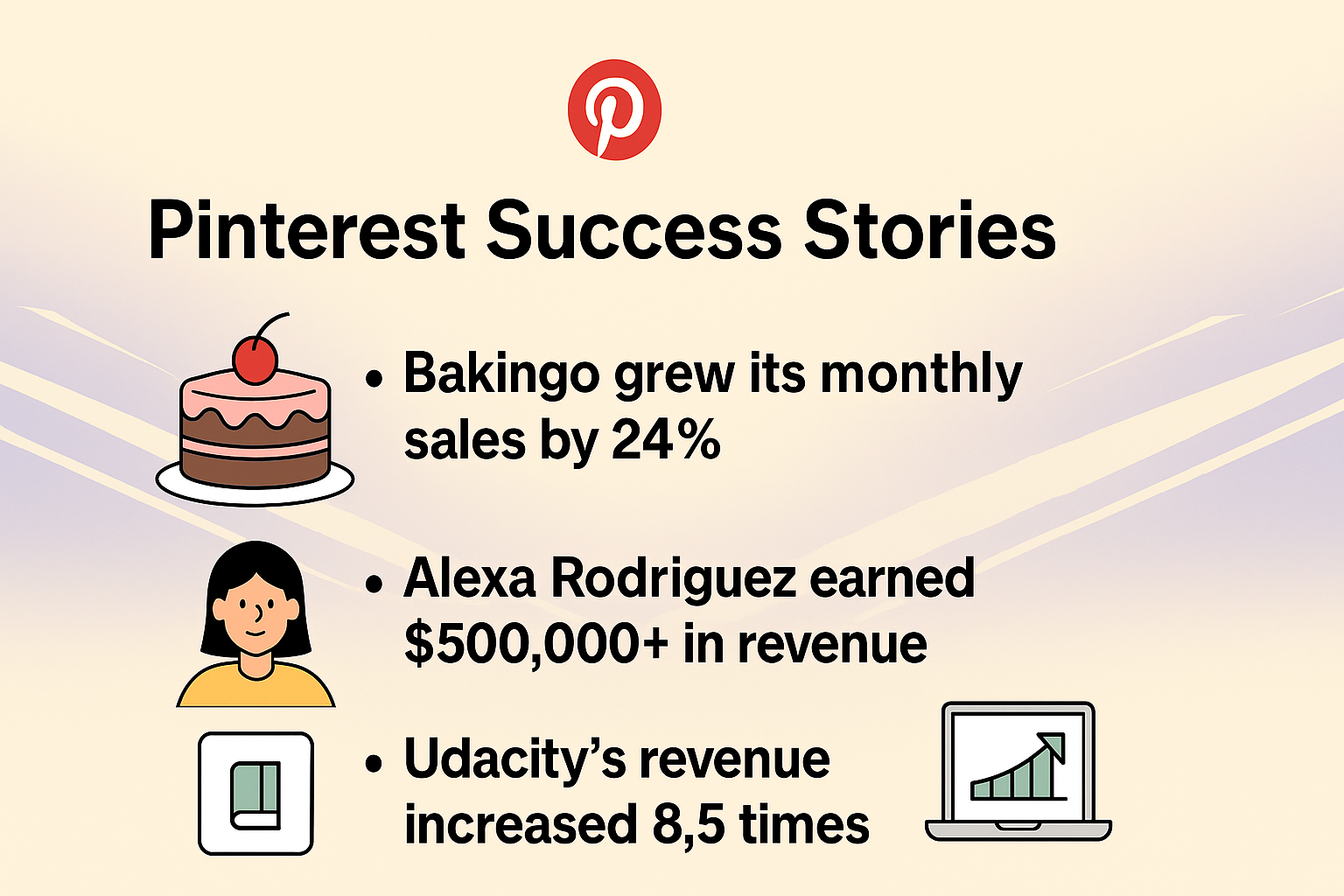
The Pin Design Formula That Stops the Scroll
Pinterest is a visual platform, yet most businesses create pins that appear like amateur hour. Professional-looking pins don’t simply generate increased engagement—they build trust and authority.
The High-Converting Pin Design Formula
Vertical Format (2→3 aspect ratio) → Pinterest recommends 1000×1500 pixels. This format takes up maximum screen real estate in feeds.
Text Overlay Strategy →
- Main headline → 60-80 characters max
- Supporting text → Keep it minimal
- Brand name → Small but visible
- Call-to-action → “Get the free guide,” “See the full tutorial”
Color Psychology for Pinterest →
- Bright, vivid colors perform better than muted tones
- Red generates urgency and action
- Blue builds trust and reliability
- Pink appeals to Pinterest’s largely female clientele
- Orange creates zeal and excitement
Brand Consistency Elements →
- Same font family across all pins
- Consistent color palette (2-3 main colors)
- Logo positioning in the same spot
- Similar design style and layout
Case Study → How Dollar Shave Club Cracked Pinterest
Dollar Shave Club isn’t the obvious Pinterest success story, but their Pinterest marketing strategy garnered over 2 million monthly views by focusing on lifestyle material instead of product photos.
Instead of submitting razor photos, people created pins about →
- “Morning Routines for Productive Days”
- “Travel Grooming Essentials for Business Trips”
- “Self-Care Sunday Ideas for Busy Professionals”
Each pin gently featured their items while delivering actual value. Their secret? They knew their customers used Pinterest to plan healthier lifestyles, not to buy for razors.
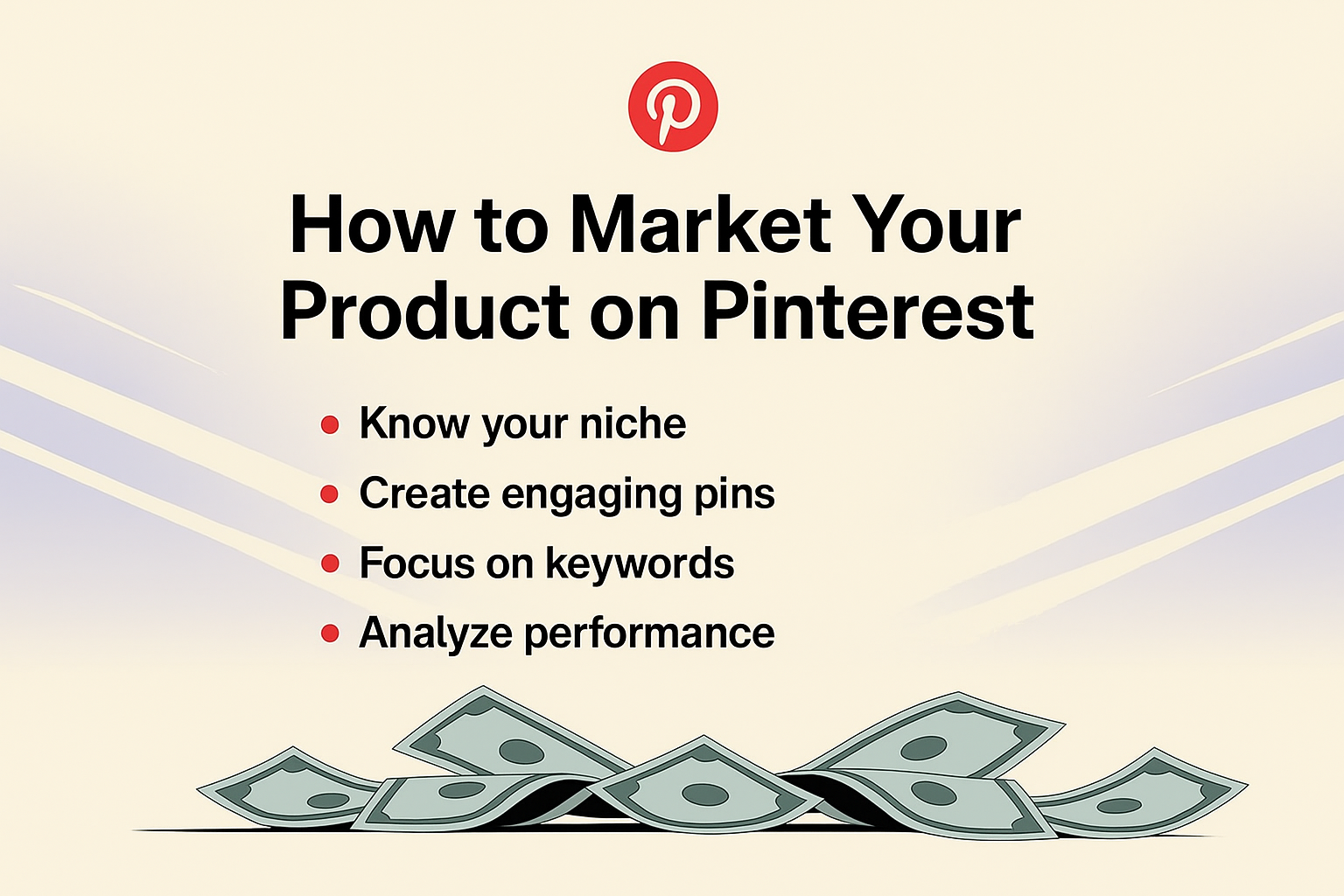
Pinterest Marketing Tools Free → Your Essential Toolkit
The finest Pinterest marketing approach doesn’t require pricey equipment. Many successful Pinterest marketers develop six-figure businesses utilizing largely free technologies.
Essential Pinterest Marketing Tools Free
Native Pinterest Tools (Completely Free)
- Pinterest Analytics → Your command center for knowing what works. Track your top-performing pins, audience demographics, and traffic sources.
- Pinterest Trends → Discover what’s hot in your niche before your competitors catch on. This tool reveals seasonal trends and upcoming topics.
- Pinterest Creator Studio → Schedule pins immediately with Pinterest’s integrated scheduler. While limited compared to third-party programs, it’s fully free and dependable.
- Rich Pins → Automatically sync metadata from your website to your pins. Essential for e-commerce enterprises and bloggers.
Third-Party Free Tools
- Canva Free → Create gorgeous pin graphics using Pinterest-specific themes. The free edition offers thousands of templates, fonts, and graphics.
- Google Keyword Planner → Research Pinterest keywords using Google’s free tool. Many Pinterest searches match Google searches.
- Unsplash → High-quality stock pictures for your pin designs. Always check usage rights and apply your own branding.
- Pinterest Browser Extension → Save material to Pinterest easily from any website. Crucial for curating relevant material on your boards.
- Tailwind Free Plan → Schedule up to 20 pins each month for free. Perfect for small businesses testing Pinterest marketing strategy.
Here’s an expert tip most Pinterest marketing books skip → Use Pinterest’s search bar as a keyword research tool. Type your core keyword and Pinterest will auto-suggest similar terms. These suggestions come directly from genuine user searches—pure gold for content development.
Advanced Free Tools Most Marketers Don’t Know About
- Pinterest Predicts Report → Pinterest offers annual trend predictions with an 80% accuracy record over five years. Use this data to design content 6-12 months ahead.
- Pinterest Labs → Experimental features and beta tools. Often provides early access to new Pinterest features before public availability.
- Facebook Ad Library → See what successful firms are advertising on Pinterest through their Facebook ad campaigns. Use this for competitive intelligence.
How to Do Affiliate Marketing on Pinterest → The Ethical Approach
Pinterest affiliate marketing is where savvy content providers establish big passive cash streams. But here’s what most tutorials won’t tell you → spamming affiliate marketing will get your account suspended faster than you can say “commission.” The key to effective Pinterest affiliate marketing rests in what I call the “Value-First Method.”
Understanding Pinterest’s Affiliate Guidelines
Pinterest enables affiliate links, however they have rigorous rules most marketers ignore →
Required disclosures →
- Use clear language like “This post contains affiliate links”
- Include disclosure in pin descriptions
- Don’t disguise affiliate relationships
Forbidden practices →
- Link cloaking or URL shortening to hide affiliate links
- Creating phony accounts to promote your own content
- Spamming numerous boards with similar pins
- Direct linking to affiliate sales pages without valuable information
The sensible approach → Create valuable content that happens to include affiliate suggestions, rather than affiliate content disguised as important information.
The Pinterest Affiliate Content Framework
Step 1 → Choose the Right Affiliate Programs
Not all affiliate programs work well on Pinterest. Focus on →
- Physical things that photograph well
- Solutions to common situations
- Items that fit Pinterest’s aspirational aesthetic
- Products with greater commission rates (Pinterest traffic converts well)
Top-performing affiliate categories on Pinterest →
- Home decor and organization
- Fashion and beauty
- Health and wellness products
- Digital courses and tools
- Kitchen gadgets and appliances
Step 2 → Create Valuable Landing Content
Never send Pinterest traffic directly to affiliate sales pages. Create bridge content that gives value first →
- Product roundup posts → “15 Organization Products That Actually Keep Your Home Tidy”
- Tutorial content → “How I Organized My Pantry Using These 5 Game-Changing Products”
- Comparison guides → “I Tested 10 Meal Planning Apps—Here Are the 3 Worth Your Money”
- Problem-solution content → “Small Kitchen Storage Solutions That Don’t Require a Renovation”
Each content should provide true value while naturally including affiliate suggestions.
Step 3 → The Pinterest-to-Email Strategy
Here’s a secret successful Pinterest affiliate marketers use → they don’t rely only on direct clicks to affiliate links. They develop email lists from Pinterest visitors.
Why this works →
- Pinterest users generally save first and buy later
- Email offers many touches with warm prospects
- You can promote diverse products to the same audience
- Email subscribers have higher lifetime value
The process →
- Create useful content with affiliate recommendations
- Offer a comparable lead magnet (free guide, checklist, template)
- Capture email addresses with opt-in forms
- Nurture subscribers with relevant content and targeted affiliate promotions
Case Study → Michelle Schroeder-Gardner’s Pinterest Affiliate Success
Michelle from Making Sense of Cents makes over $10,000 monthly in affiliate commissions, with Pinterest as a primary traffic source. Her strategy →
- Content focus → Personal finance education and lifestyle content
- Affiliate integration → Natural product recommendations within helpful content
- Pinterest approach → Valuable financial tips with subtle affiliate inclusions
- Key insight → She treats affiliate marketing as helpful recommendations, not sales pitches
Her most successful Pinterest material includes “How I Save $1,000 Monthly on Groceries” and “Travel Hacking Tools That Actually Work”—each giving true value while integrating savvy affiliate connections.
Advanced Pinterest Affiliate Tactics
- Seasonal Content Planning → Pinterest users plan ahead. Create Christmas gift suggestions in September, summer vacation content in March, and back-to-school content in June.
- Product Bundling Strategy → Instead of promoting individual products, develop themed bundles. “Complete Home Office Setup for Under $500” converts better than individual product pins.
- Story-Driven Pins → Share personal experiences with products. “How This $30 Planner Changed My Productivity Game” performs better than “Best Planners for Organization.”
- Video Pin Integration → Pinterest’s algorithm prioritizes video content. Create short product demos, unboxing films, or lessons featuring affiliate products.
Pinterest Marketing Strategy for Different Business Types
E-commerce Businesses
Primary Goal → Drive direct product sales and raise average order value
Content Strategy →
- Product lifestyle shots (60%)
- How-to content highlighting your products (25%)
- User-generated content and testimonials (15%)
Key Tactics →
- Enable Pinterest Shopping and Product Rich Pins
- Create seasonal collections and gift recommendations
- Use Pinterest’s Try-On features for fashion/beauty
- Implement Pinterest conversion tracking
Success Example → Ruggable’s Pinterest Strategy
Ruggable, the washable rug manufacturer, produces millions in revenue through Pinterest by focusing on room ideas rather than product photos. Their strategy →
Content themes →
- “Small Living Room Ideas That Actually Work”
- “Kid-Friendly Home Decor That’s Still Stylish”
- “Pet-Proof Decorating Solutions”
Each pin exhibits their rugs in attractive room settings while solving actual design challenges. They’re not selling rugs—they’re selling lifestyle solutions.
Service-Based Businesses
Primary Goal → Generate leads and build authority
Content Strategy →
- Educational content indicating expertise (50%)
- Before/after showcases (30%)
- Behind-the-scenes and process content (20%)
Key Tactics →
- Create lead magnets and free resources
- Use Pinterest to increase traffic to relevant blog content
- Showcase client results and case studies
- Build email lists through Pinterest traffic
Success Example → Interior Designer Maria Killam
Interior designer Maria Killam uses Pinterest to generate high-end residential clients across North America. Her approach →
Content focus →
- Color theory education
- Room design principles
- Before/after transformations
- Style guides and mood boards
Lead generating method → Pinterest brings attention to her site, where she gives free design resources in exchange for email addresses. These leads turn to $10,000+ design assignments.
Content Creators and Bloggers
Primary Goal → Increase blog traffic and monetize through ads/affiliates
Content Strategy →
- Blog post promotion pins (40%)
- Valuable standalone tips (30%)
- Affiliate product recommendations (20%)
- Lead magnets and free resources (10%)
Key Tactics →
- Create numerous pins per blog post
- Focus on evergreen content that attracts long-term traffic
- Use Pinterest SEO to rank for competitive keywords
- Build email lists to lessen dependence on social traffic
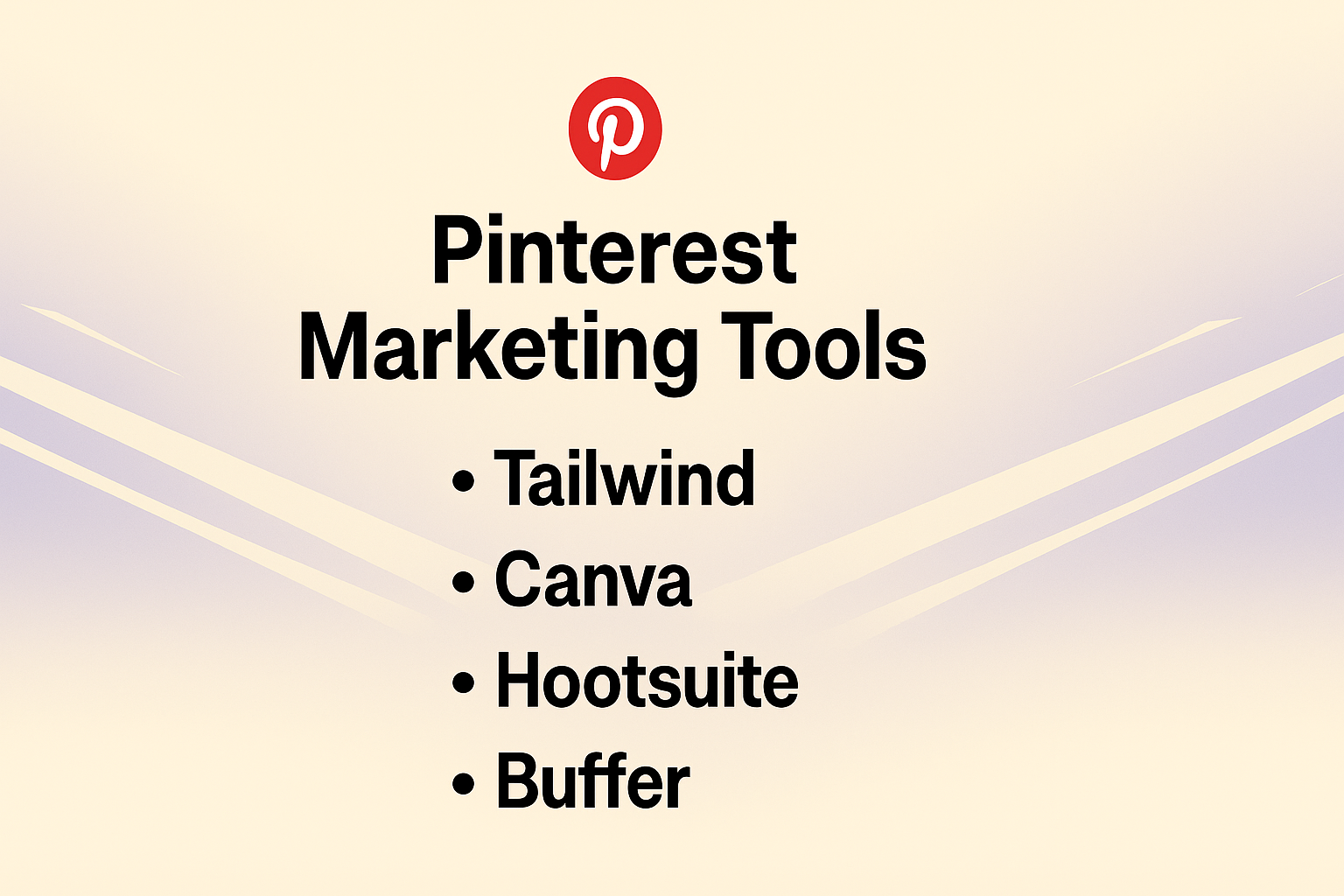
Pinterest Algorithm Secrets → What Actually Works in 2024
The Pinterest algorithm has evolved tremendously, and many outdated tactics actually damage your reach now. Here’s what’s genuinely working based on current data and insider perspectives.
The Pinterest Algorithm’s Core Ranking Factors
- Fresh Content Priority → Pinterest favors new content, but with a twist. The system seeks for “fresh takes” on hot topics, not just recently published articles.
- Interaction Velocity → How rapidly your pins gain initial interaction (saves, clicks, comments) communicates quality to the algorithm. The first 24-48 hours are essential.
- Topic Authority → Pinterest promotes accounts that consistently publish outstanding material in specific topics. Scattered material across unrelated themes limits your overall reach.
- Pin Quality Score → Pinterest measures image quality, description thoroughness, and landing page relevance. Low-quality pins impair your account’s overall performance.
- User Interaction History → The algorithm evaluates how users have interacted with your material when considering whether to offer them new pins.
Current Algorithm Updates and Changes
- The “Fresh Pin” Requirement → Pinterest now prioritizes wholly unique pin designs above identical pins shared to numerous boards. Create distinct pin versions instead of reposting the same image.
- Video Pin Boost → Video pins receive substantially more distribution than static photos. Even basic dynamic visuals outperform static pins.
- Idea Pin Emphasis → Pinterest actively promotes Idea Pins (multi-page content) in feeds. These pins can’t link directly to websites but create brand exposure and followers.
- Search Intent Matching → The algorithm better understands search intent and matches pins accordingly. Optimize for specific user goals, not simply keywords.
Advanced Algorithm Optimization Tactics
- The 24-Hour Engagement Window → Focus your promotion efforts in the first day following publishing. Share in relevant groups, email your list, and cross-promote on other platforms.
- Seasonal Material Timing → Upload seasonal material 2-3 months before peak search hours. Christmas stuff should go live in September, not December.
- Hashtag Strategy Update → Pinterest lowered hashtag relevance. Focus on 3-5 very relevant hashtags rather than cluttering descriptions with 20+ tags.
- Pin Description Length → Optimal descriptions are 100-200 characters. Longer descriptions get trimmed off in search results and mobile feeds.
- Board Optimization → Active boards (frequently updated with quality content) score higher than static boards. Update your top boards regularly with fresh pins.
Case Study → How Tasty Dominates Pinterest Through Algorithm Understanding
BuzzFeed’s Tasty brand receives over 50 million monthly Pinterest views by optimizing for algorithm preferences →
- Fresh Content Strategy → They create new recipe pins daily, never reposting identical content
- Video-First Approach → Every pin includes a recipe video, dramatically increasing engagement
- Seasonal Optimization → Holiday recipes go live months before the actual holidays
- Cross-Platform Integration → They drive initial engagement through Instagram and Facebook to signal quality to Pinterest
Key takeaway → Tasty treats Pinterest as a search engine, not a social network. They optimize for discovery, not simply follower engagement.
Pinterest Marketing Tools and Analytics → Measuring What Matters
Most businesses track vanity metrics on Pinterest instead of focusing on numbers that genuinely effect revenue. Here’s how to measure Pinterest marketing success properly.
Essential Pinterest Analytics Metrics
Traffic Metrics That Matter →
- Monthly views → Total impressions across all your pins
- Website clicks → Direct traffic from Pinterest to your site
- Save rate → Percentage of viewers who save your pins
- Click-through rate → Clicks divided by impressions
Engagement Quality Indicators →
- Average time on site → How long Pinterest visitors remain on your website
- Pages per session → How many pages Pinterest visitors view
- Bounce rate → Single-page visits from Pinterest traffic
- Conversion rate → Pinterest visitors who complete targeted tasks
Business Impact Metrics →
- Revenue attributed to Pinterest → Sales straight from Pinterest traffic
- Email signups from Pinterest → Lead generation effectiveness
- Social media followers gained → Cross-platform growth
- Brand mention increases → Awareness building success
Advanced Pinterest Analytics Setup
- Pinterest Tag Implementation → Install Pinterest’s conversion tracking tag to assess genuine ROI. This tracks actions visitors take after clicking your pins.
- Google Analytics Pinterest Segment → Create a custom segment to isolate and analyze Pinterest traffic separately from other sources.
- UTM Parameter Strategy → Use consistent UTM codes on all Pinterest links to track performance in Google Analytics.
- Heat Map Analysis → Use tools like Hotjar to see how Pinterest users engage with your website differently from other traffic sources.
Pinterest Analytics Tools and Resources
Free Analytics Tools →
- Pinterest Analytics (native platform analytics)
- Google Analytics (with proper Pinterest tracking setup)
- Pinterest Trends (keyword and trend study)
- Pinterest Creator Studio (basic scheduling and analytics)
Paid Analytics Tools →
- Tailwind → Advanced Pinterest analytics and competitor research
- Sprout Social → Cross-platform analytics including Pinterest
- Hootsuite → Pinterest analytics within larger social media reporting
- Later → Visual content calendar with Pinterest performance tracking
Advanced Analytics Techniques
- Cohort Analysis → Track how Pinterest traffic behavior evolves over time. New Pinterest users frequently browse more before converting compared to regular visitors.
- Attribution Modeling → Pinterest traffic typically leads to conversions that are credited to other channels. Use multi-touch attribution to discover Pinterest’s full impact.
- Seasonal Performance Analysis → Track how your Pinterest performance swings seasonally to optimize content timing and budget allocation.
Advanced Pinterest Marketing Strategies → Beyond the Basics
The Pinterest SEO Deep Dive
Pinterest SEO goes much beyond basic keyword optimization. The platform uses powerful search algorithms that examine many ranking factors.
Advanced Keyword Strategy →
- Long-tail keyword targeting → Focus on 4-6 word phrases that fit specific user intent
- LSI keyword integration → Include semantically similar terms Pinterest expects to see
- Question-based keywords → Target “how to,” “what is,” and “where to” phrases
- Local SEO for Pinterest → Include location keywords for location-based businesses
Technical Pinterest SEO →
- Rich Pins implementation → Enable article, product, and app Rich Pins for better visibility
- Schema markup optimization → Ensure your website’s structured data feeds Pinterest appropriately
- Site verification → Claim your website to enhance credibility signals
- Pinterest sitemap submission → Help Pinterest discover and index your content faster
Content SEO Optimization →
- Pin description formulas → Use established templates that include keywords organically
- Board SEO strategy → Optimize board titles, descriptions, and cover pictures for search
- Alt text optimization → Write descriptive alt text for photos to increase accessibility and searchability
Pinterest Advertising Strategy → Beyond Promoted Pins
Pinterest advertising offer advanced targeting options most organizations never investigate. Advanced Pinterest advertising goes beyond basic promoted pins.
Advanced Pinterest Ad Formats →
- Shopping Ads → Dynamic product catalogs that automatically update
- Video Ads → Engaging video content that catches attention in feeds
- Carousel Ads → Multiple photos highlighting different products or characteristics
- Collection Ads → Curated sets of products around various topics
Sophisticated Targeting Options →
- Customer list targeting → Upload email lists for remarketing campaigns
- Website visitor retargeting → Target users who visited specific pages
- Lookalike audiences → Find consumers similar to your greatest customers
- Interest and behavior targeting → Combine numerous targeting layers for precision
Advanced Bidding Strategies →
- Cost per click (CPC) optimization → Pay only when consumers click your pins
- Cost per mille (CPM) optimization → Pay for impressions to build brand recognition
- Conversion optimization → Let Pinterest’s algorithm optimize for your individual conversion goals
- Dynamic bidding → Automatically modify offers based on chance of conversion
Case Study → Home Depot’s Advanced Pinterest Strategy
Home Depot produces over $100 million yearly on Pinterest by mixing organic content with clever advertising →
Organic Strategy →
- DIY techniques and home improvement guides
- Seasonal project inspiration
- Problem-solving content for homeowners
Advertising Strategy →
- Retargeting website visitors with suitable products
- Lookalike audiences based on high-value consumers
- Dynamic product advertising that update automatically
- Local store inventory integration
Key Innovation → They invented “Virtual Room Designer” pins that enabled customers imagine things in multiple room settings, greatly increasing conversion rates.
Pinterest Content Automation and Scaling
Successful Pinterest marketing involves consistent content production and dissemination. Smart automation lets you scale without losing quality.
Content Creation Automation →
- Template-based design systems → Create pin templates for uniform, scalable design
- AI-powered image generation → Use tools like Canva’s Magic Write for pin descriptions
- Automated text overlay → Tools that automatically add text to product photos
- Bulk pin creation → Generate many pin variations from single pieces of content
Distribution Automation →
- Smart scheduling → Post when your audience is most active
- Board rotation → Automatically disperse information among relevant boards
- Cross-promotion → Share fresh pins across several social networks
- RSS feed integration → Automatically create pins from new blog entries
Analytics Automation →
- Performance reporting → Automated weekly or monthly Pinterest performance reports
- Competitor monitoring → Track competitor Pinterest strategies automatically
- Trend identification → Automated alerts for trending subjects in your niche
- ROI tracking → Automatic estimate of Pinterest’s contribution to revenue
Pinterest Marketing Mistakes That Kill Your Results
Even skilled marketers make Pinterest blunders that damage their success. Avoid these typical errors that can damage your Pinterest marketing plan.
Content Creation Mistakes
- The “Perfect Pin” Trap → Spending weeks designing the “perfect” pin instead of trying several versions fast. Pinterest favors consistency over perfection.
- Instagram-Style Content → Using square images and Instagram captions on Pinterest. Pinterest users desire vertical images and informative, keyword-rich content.
- Self-Promotional Overload → Making every pin about your products or services. Follow the 80/20 rule → 80% valuable material, 20% promotional.
- Ignoring Pinterest’s Visual Style → Each platform has its own look. Pinterest users want bright, crisp photographs with readable text overlays.
Strategy Mistakes
- Treating Pinterest Like Social Media → Pinterest is a visual search engine, not a social network. Optimize for discovery, not social engagement.
- Inconsistent Pinning → Posting intermittently instead of sustaining consistent activity. Pinterest rewards accounts that pin consistently.
- Wrong Audience Targeting → Creating material for your industry colleagues instead of your actual customers. Pinterest users want solutions, not industry jargon.
- Neglecting Mobile Users → Over 85% of Pinterest users access the platform on mobile devices. Always preview your pins on mobile before publishing.
Technical Mistakes
- Broken Links and Poor Landing Pages → Sending Pinterest traffic to slow-loading or irrelevant pages. Pinterest users have high expectations for website quality.
- Missing Rich Pins → Not implementing Rich Pins means missing out on better visibility and automated updates.
- Poor Website Integration → Failing to integrate Pinterest Save buttons to your website or blog entries.
- Ignoring Pinterest Analytics → Making decisions based on assumption instead of data from Pinterest Analytics.
The Future of Pinterest Marketing → Trends and Predictions
Emerging Pinterest Features
- Pinterest TV and Live Shopping → Real-time shopping experiences and live demos are growing more important.
- AR Try-On Features → Augmented reality features that let users virtually try things before purchasing.
- Voice Search Optimization → Pinterest is incorporating voice search capabilities, demanding new SEO tactics.
- AI-Powered Personalization → More sophisticated algorithms that better match content with user interests.
Changing User Behaviors
- Mobile-First Planning → Users increasingly plan complete projects and purchases through mobile Pinterest apps.
- Gen Z Adoption → Younger users are joining Pinterest for aesthetic inspiration and lifestyle planning.
- International Growth → Pinterest’s development into new markets presents potential for worldwide enterprises.
- Shopping Integration → The border between inspiration and purchasing continues to blur.
Preparing for Pinterest’s Future
- Invest in Video Content → Video pins will become increasingly vital for visibility and engagement.
- Build Email Lists → Reduce dependence on platform updates by capturing Pinterest visitors in your own email marketing system.
- Focus on Value Creation → Algorithm modifications reward content that really assists users over commercial stuff.
- Stay Platform-Agnostic → Use Pinterest as part of a bigger content marketing plan, not your single traffic source.
Conclusion → Your Pinterest Marketing Action Plan
Pinterest marketing strategy isn’t about making nice pins and hoping for the best. It’s about understanding user intent, providing valuable content, and optimizing for discovery.
Your 30-Day Pinterest Marketing Action Plan →
Week 1 → Foundation Setup
- Convert to Pinterest Business account
- Optimize your profile and bio
- Create 5-10 strategic boards
- Install Pinterest tag on your website
- Set up Pinterest Analytics tracking
Week 2 → Content Creation
- Design 20-30 pins using the content framework
- Write keyword-optimized descriptions
- Create lead magnets for email capture
- Set up automated pinning schedule
Week 3 → SEO and Optimization
- Research and target long-tail keywords
- Enable Rich Pins for your content
- Optimize existing pins and boards
- Start establishing backlinks to your Pinterest profile
Week 4 → Analysis and Scaling
- Analyze first month’s performance statistics
- Identify top-performing content kinds
- Create more of what’s working
- Plan next month’s content calendar
The Pinterest Marketing Strategy Reality Check →
Pinterest marketing isn’t a get-rich-quick scam. It’s a long-term content approach that compounds over time. Most effective Pinterest marketers report limited results in months 1-3, steady growth in months 4-6, and major traffic gains after 6-12 months of constant effort.
But here’s what makes Pinterest marketing worth the investment → once your pins start ranking and driving traffic, they may continue generating visits and sales for months or years without extra effort. It’s one of the few marketing channels where your earlier work continues paying returns.
The secret most Pinterest marketing guidelines won’t tell you → Success on Pinterest comes from using it like a search engine, not a social network. Create content that addresses problems, optimize for discovery, and focus on long-term value generation above short-term vanity metrics. Whether you’re an e-commerce store aiming to drive sales, a service provider creating authority, or a content producer monetizing visitors, Pinterest marketing strategy may alter your business—if you approach it strategically and commit to constant execution. The question isn’t whether Pinterest marketing works. The question is whether you’re ready to put in the work to make it work for your business.
Start with one pin today. Then make another tomorrow. And another the day after that.
Consistency beats perfection every time on Pinterest. Your future self will appreciate you for starting now instead of waiting for the “perfect” technique.
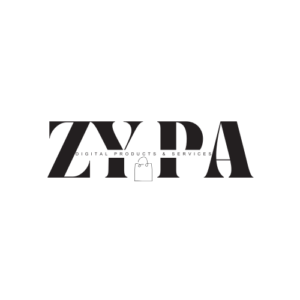

This blog post breaks Pinterest down so well for beginners. I saved this post in my notes instantly. Clear writing, real strategy, and no annoying ads — refreshing to find quality content like this for free.
Appreciate it, James! Happy to hear you found it useful. Let us know how your Pinterest journey goes!
Can’t believe this is free! The tips are practical and actually make sense — not just generic fluff. I’ve already tweaked my Pinterest boards based on this and noticed better engagement. Big thanks to ZYPA!
Thanks so much, Sarah! So glad the tips helped — we’ve got more Pinterest guides coming soon. Stay tuned! 😊